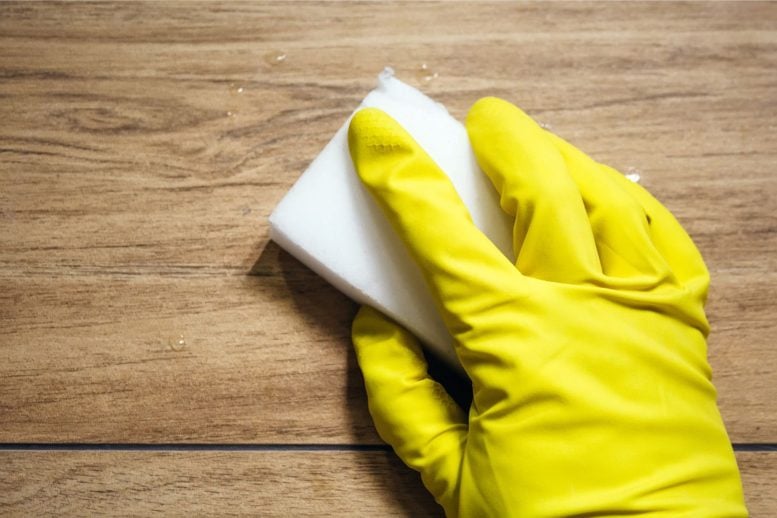
Research reveals that melamine sponges, commonly used for cleaning, release over a trillion microplastic fibers globally each month due to wear and tear. These fibers can contaminate water systems and enter the food chain.
Melamine sponges release trillions of microplastic fibers monthly, posing environmental risks. Making denser sponges and using alternative cleaning methods are recommended solutions.
If you’ve ever owned white shoes or attempted to scrub crayon marks off a wall, you’re probably thankful for melamine sponges. These sponges, known for their ability to effortlessly remove stubborn stains and scuffs without the need for extra cleaning agents, rely on their distinctive abrasive properties. However, these “magic” sponges shed microplastic fibers when worn down. According to a study published in the American Chemical Society’s Environmental Science & Technology, it’s estimated that melamine sponges contribute to the release of over a trillion microplastic fibers globally each month.
Melamine foam is made of poly(melamine-formaldehyde) polymer — a network of hard, plastic strands assembled into a soft, lightweight foam that’s surprisingly abrasive, making it the perfect material for very scrubby sponges. But, as the sponges wear away from use, the foam breaks down into smaller pieces that can release microplastic fibers that wash into sewer systems. Once released into the environment, the fibers can be consumed by wildlife and make their way into the food chain. Yu Su, Baoshan Xing, Rong Ji, and colleagues wanted to see how a melamine sponge’s density and the roughness of the surface it scrubs affect how quickly the foam breaks down, as well as calculate how many microplastic fibers the sponge sheds.
Research Findings on Microplastic Emission
The team purchased several sponges from three popular brands, and then repeatedly rubbed them against textured metal surfaces, causing the foam to wear down. They found that sponges made from denser foam wore down more slowly and produced fewer microplastic fibers than less dense sponges. Next, the team determined that a single sponge releases approximately 6.5 million fibers per gram of worn-out sponge and assumed that all sponges sold, on average, are worn down by 10%.
To get a rough idea of how many fibers could be released per month, they looked at Amazon’s monthly sales for August 2023. Assuming these numbers stay consistent, the team calculated that 1.55 trillion fibers from melamine sponges could be released every month. However, this number only takes into account one online retailer, so the actual amount could be even higher.
To help minimize the emission of microplastic fibers, the researchers recommend that manufacturers create denser, tougher sponges that are more resistant to wear. Additionally, they suggest that consumers opt for natural cleaning products that do not use plastics. They also recommend installing filtration systems to capture sloughed-off microplastic fibers either in the home or in wastewater treatment plants.
Reference: “Mechanochemical Formation of Poly(melamine-formaldehyde) Microplastic Fibers During Abrasion of Cleaning Sponges” by Yu Su, Chenqi Yang, Songfeng Wang, Huimin Li, Yiyu Wu, Baoshan Xing and Rong Ji, 6 June 2024, Environmental Science & Technology.
DOI: 10.1021/acs.est.4c00846
The authors acknowledge funding from the National Natural Science Foundation of China and the Key-Area Research and Development Program of Guangdong Province.









What doesn’t kill you makes you… “sponger”?
How does this compare to other sources? Microfibers are, well, small. For comparison, there are more than a billion cars in the world releasing plastics in all manner of ways, much more than the equivalent of one thousand per year.
I believe this is another item designed by some enemies of ours as an evil plot to contaminate our bodies & our country. This is why they won’t sell the item in their own countries.
They are trying to contaminate our precious bodily fluids
When China bans them then we can take anything from there seriously… Until then they are the largest polluter in the world CO2, plastic or otherwise…
China is slowly killing the earth
None of this is new. This is why any melamine scrubbers come with a warning that say not for use on food prep surfaces.